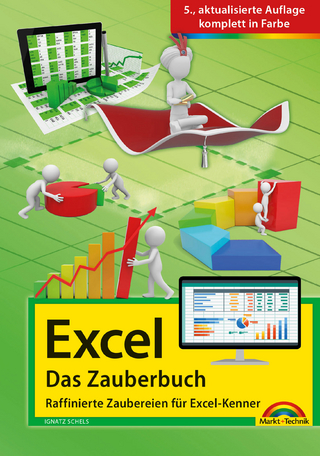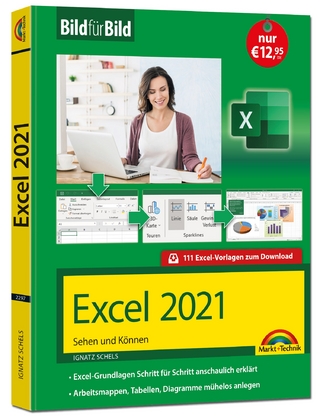
Introduction to Quantitative Methods in Business
John Wiley & Sons Inc (Verlag)
978-1-119-22107-4 (ISBN)
A well-balanced and accessible introduction to the elementary quantitative methods and Microsoft Office Excel applications used to guide business decision making
Featuring quantitative techniques essential for modeling modern business situations, Introduction to Quantitative Methods in Business: With Applications Using Microsoft Office Excel provides guidance to assessing real-world data sets using Excel. The book presents a balanced approach to the mathematical tools and techniques with applications used in the areas of business, finance, economics, marketing, and operations.
The authors begin by establishing a solid foundation of basic mathematics and statistics before moving on to more advanced concepts. The first part of the book starts by developing basic quantitative techniques such as arithmetic operations, functions and graphs, and elementary differentiations (rates of change), and integration. After a review of these techniques, the second part details both linear and nonlinear models of business activity. Extensively classroom-tested, Introduction to Quantitative Methods in Business: With Applications Using Microsoft Office Excel also includes:
Numerous examples and practice problems that emphasize real-world business quantitative techniques and applications
Excel-based computer software routines that explore calculations for an assortment of tasks, including graphing, formula usage, solving equations, and data analysis
End-of-chapter sections detailing the Excel applications and techniques used to address data and solutions using large data sets
A companion website that includes chapter summaries, Excel data sets, sample exams and quizzes, lecture slides, and an Instructors' Solutions Manual
Introduction to Quantitative Methods in Business: With Applications Using Microsoft Office Excel is an excellent textbook for undergraduate-level courses on quantitative methods in business, economics, finance, marketing, operations, and statistics. The book is also an ideal reference for readers with little or no quantitative background who require a better understanding of basic mathematical and statistical concepts used in economics and business.
Bharat Kolluri, Ph.D., is Professor of Economics in the Department of Economics, Finance, and Insurance at the University of Hartford. A member of the American Economics Association, his research interests include econometrics, business statistics, quantitative decision making, applied macroeconomics, applied microeconomics, and corporate finance. Michael J. Panik, Ph.D., is Professor Emeritus in the Department of Economics, Finance, and Insurance at the University of Hartford. He has served as a consultant to the Connecticut Department of Motor Vehicles as well as to a variety of health care organizations. In addition, Dr. Panik is the author of numerous books, including Growth Curve Modeling: Theory and Applications and Statistical Inference: A Short Course, both published by Wiley. Rao N. Singamsetti, Ph.D., is Associate Professor in the Department of Economics, Finance, and Insurance at the University of Hartford. A member of the American Economics Association, his research interests include the status of war on poverty in the United States since the 1960s and forecasting foreign exchange rates using econometric methods.
1. The Mathematical Toolbox: A Summary 1 1.2 Linear Functions 1
1.3.1 Solving Two Simultaneous Linear Equations 1
1.4 Summation Notation 2
1.5 Sets 3
1.6 Functions and Graphs 3
1.7 Working with Functions 4
1.8 Differentiation and Integration 5
Solutions to Odd-Numbered Exercises 8
2. Applications of Linear and Nonlinear Functions: A Summary 32
2.2 Linear Demand and Supply Functions 32
2.3 Linear Total Cost and Total Revenue Functions 33
2.4 Market Equilibrium 33
2.6 Applications of Nonlinear Functions 34
2.7 Present Value of an Income Stream 35
2.8 Average Values 35
2.9 Marginal Values 36
2.10 Elasticity 36 Solutions to Odd-Numbered Exercises 37
3. Optimization: A Summary 47
3.2 Unconstrained Optimization 47
3.2.1 Models of Profit and Revenue Maximization 47
3.2.3 Solution Using the Calculus Approach 47
3.2.5 Solution Using the Calculus Approach 47
3.3 Models of Cost Minimization: Inventory Cost Functions and Economic Order Quantity (EOQ) 48
3.3.2 Solution Using the Calculus Approach 49
3.4 Constrained Optimization: Linear Programming 50
3.4.1 Linear Programming: Maximization 50
3.4.2 Linear Programming: Minimization 51
Solutions to Odd-Numbered Exercises 52
4. What Is Business Statistics? 68
4.3 Descriptive Statistics: Tabular and Graphical Techniques 68
4.4 Descriptive Statistics: Numerical Measures of Central Tendency or Location of Data 70
4.4.1 Population Mean 70
4.4.2 Sample Mean 70
4.4.3 Weighted Mean 70
4.4.4 Mean of a Frequency Distribution: Grouped Data 71
4.4.5 Geometric Mean 71
4.4.6 Median 71
4.4.7 Quantiles, Quartiles, Deciles, and Percentiles 71
4.4.8 Mode 72
4.5 Descriptive Statistics: Measures of Dispersion (Variability or Spread) 73
4.5.2 Variance 73
4.5.3 Standard Deviation 74
4.5.4 Coefficient of Variation 74
4.5.5 Some Important Uses of the Standard Deviation 75
1. Standardization of Values 75
2. Chebysheff’s Theorem 75
4.5.6 Empirical Rule 75
4.6 Measuring Skewness 76
Solutions to Odd-Numbered Exercises 76
5. Probability and Applications 96
5.2 Some Useful Definitions 96
5.3 Probability Sources 96
5.3.1 Objective Probability 96
5.4 Some Useful Definitions Involving Sets of Events in the Sample Space 96
5.5 Probability Laws 97 5.5.2 Rule of Complements 97
5.5.3 Conditional Probability 97
5.5.4 General Multiplication Rule (Product Rule) 97
5.5.5 Independent Events 98
5.5.6 Probability Tree Approach 98
5.6 Contingency Table 98
Solutions to Odd-Numbered Exercises 100
6. Random Variables and Probability Distributions 105
6.2 Probability Distribution of a Discrete Random Variable X 105
6.3 Expected Value, Variance, and Standard Deviation of a Discrete Random Variable 106
6.3.1 Some Basic Rules of Expectation 106
6.3.2 Some Useful Properties of the Variance of X 107
6.4 Continuous Random Variables and Their Probability Distributions 107
6.5 A Specific Discrete Probability Distribution: The Binomial Case 108
6.5.1 Binomial Probability Distribution 108
6.5.2 Mean and Standard Deviation of the Binomial Random Variable 109
6.5.3 Cumulative Binomial Probability Distribution 110 Solutions to Odd-Numbered Exercises 110
Index 119
| Erscheinungsdatum | 04.10.2016 |
|---|---|
| Verlagsort | New York |
| Sprache | englisch |
| Maße | 152 x 229 mm |
| Gewicht | 218 g |
| Themenwelt | Informatik ► Office Programme ► Excel |
| Mathematik / Informatik ► Mathematik ► Angewandte Mathematik | |
| Mathematik / Informatik ► Mathematik ► Finanz- / Wirtschaftsmathematik | |
| Mathematik / Informatik ► Mathematik ► Wahrscheinlichkeit / Kombinatorik | |
| Wirtschaft ► Betriebswirtschaft / Management | |
| ISBN-10 | 1-119-22107-2 / 1119221072 |
| ISBN-13 | 978-1-119-22107-4 / 9781119221074 |
| Zustand | Neuware |
| Haben Sie eine Frage zum Produkt? |
aus dem Bereich


